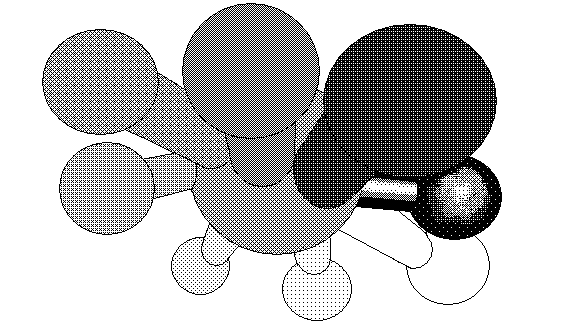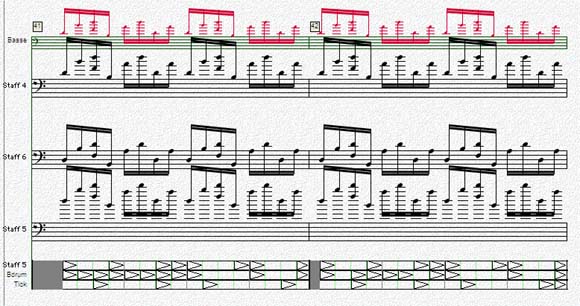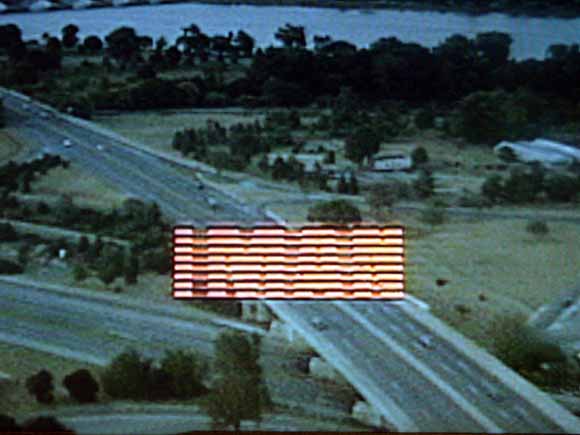View current page
...more recent posts
Artist and blogger twhid responds here to the previous posts (1 / 2) on whether it's necessary to know code to make digital art:
I find myself on both sides of this issue.I had hoped to make it clear that the canvas analogy isn't good, since there are decades of theory showing the canvas is a far from neutral surface and the rectangle an inherited convention that can be subverted: much modern art is about dismantling the tools of painting, conceptually, not just physically. Arguably new media art built on this existing conceptual framework of modern and poMo theory--applying its precepts to the computer, video, etc.
On one hand, I donít think itís necessary to be able to program a computer to make digital art.* Especially as the tools to create digital art get better and better. And besides, what is the difference between Windows APIs and the the interface of Photoshop? They both present you with tools to make things happen on a computer.
On the other, I think having programming knowledge is very important (but not necessary) for one to be a digital artist. I would argue that instead of Tomís analogy of a painter grinding his own paint, a better analogy is that a painter must understand how color and 2d form work. For those are the building blocks of a painting really, not the paint. Itís a mistake to confuse a computer for a canvas, to think of it simply as a means to a visual end. A computer does much more than display images on its display. With much new media art the how of image creation is just as important as the images themselves.
+++++++++++++++
*Of course you get into a whole other argument if you do agree: is writing in a scripting language programming? How low-level is the code you program? Is programming in C++ somehow Ďbetterí than programming in Java? etc, etc.
My "grinding paint" analogy was chosen precisely because it invokes the nerdy, irrelevant side of art. It's a Renaissance technology (and accompanying set of problems) that some painters unbelievably still find vital in the modern/poMo era. If knowing how to program results in some extreme refinement that Photoshop couldn't give you but is not visible to any reasonably sized art audience, then who cares about it? Those were the thoughts I had on seeing John Maeda's shows: so he can program? That means he can make more finely adjusted screen savers.

Centrifuge (Side View), Animated .GIF, 2004
Also on view in the online exhibition Sunday Afternoon, curated by MatCh-Art (Matthew Fisher and Christina Vassallo).
In the comments to my previous post about whether you have to know code to make art with digital tools, Mark says "The way I read the [BEIGE] interview, the [BEIGE'rs are] interested in programming because they are interested in complete control. Do you have to stretch your own canvas to be a painter? Well, if you're tired of rectangles, perhaps."
My reply:
That's true--but some artists were tired of rectangles and made their own, oddly shaped supports. An analogy I've used is the purist artist who thinks you have to grind your own pigment to paint, either because store bought colors aren't good enough or out of some strict truth-to-materials dictate. I think that applies to John Maeda--his "if you aren't programming you aren't using the computer" rap has a whiff of the purist ascetic about it. The BEIGE'rs are a little more complicated. They're pretty much admitting that the only way they can "own" the medium is to use old computers that they can comfortably hack, so there's a built-in humility or pathos factor there. Also, they're rejecting the store-bought colors not to show their superiority to us mortals,1 but because there's something innately offensive about always having to use Microsoft Color TubesTM (or whatever) to make art. Maeda uses his dual art & programming background as a critical shield, in effect saying to artists who don't like his work, "yes, but you know nothing about the programming" and to engineers, "yes, but you know nothing about art." With the BEIGE'rs, there's no such mystification: by using the old NIntendo games as a starting point, viewers have an accessible point of entry and can intuitively "get" what they're doing.
1. Unless you're Markus Popp.
Does one have to write code to make art or music with digital tools? Two proponents of code are designer/MIT Media Lab professor John Maeda (on the hi-fi end of the digital spectrum) and the BEIGE crew (on the low end--for a manifesto see this interview). The former may be a good programmer but he's not a particularly good artist, as anyone who saw his shows at Cristinerose Gallery will attest, whereas the BEIGE-rs are good artists arguably independent of their hacking skills. The beef about using consumer software is that an engineer makes aesthetic choices for you. But there is a whole side of digital art production devoted to thwarting the programs through non-coding means---by physical interventions like damaging CDs or analog tricks such as messing with the audio or printer output or simply using the programs "wrong"--overstressing them till they start producing intriguing gobbledegook. If you limited yourself to coding you'd miss out on other fun ways to make Photoshop and MAX-MSP break down.
UPDATE: This discussion continues in these follow-up posts: 2 / 3 / 4 / 5 / 6
.

"Something Clicked" - [mp3 removed].

Just noticed Ted Rall's evisceration of Art Spiegelman's 9/11 book. This 20 dollar, 42-page pamphlet, padded out with thick paper stock and reprints of early 20th Century comic strips (ostensibly to show the difference between New York now and then, or whatever) sounded wretched from the reviews I read, which were mostly respectful prior to Rall's blog post. Rall, you may remember, complained loudly in a 1999 Village Voice article that Spiegelman had become a corrupt power broker of the comics world during his tenure at the New Yorker. Spiegelman left the magazine after its post-9/11 turn (further) to the right, which was laudable, even though his wife continues to hold a key position (for artists) there. The book sounded icky for framing the tragedy in terms of Spiegelman's personal meltdown and self-loathing so I didn't go near it, even to free-read it at the bookstore. Rall's take is completely vicious, but for Spiegelman to compare himself, living in a Tribeca loft after 9/11, to a German Jew staying in Berlin after Kristallnacht seems a bit...overwrought.
[The image above is not related--I put it in so the post had a 1987 reference--semi-inside joke.]
We already know that the U.S. President doesn't exactly play fair (unloading Harken Energy stock on inside information, artificially deflating the price of baseball stadium land, the 2000 election) so allegations that he has an ear-canal audioprompter telling him what to say should come as no surprise. The website Is Bush Wired? and Dave Lindorff's pieces for Salon and Counterpunch make a convincing case that not only does the little man use the prompter in speeches, but also answering tricky questions in press conferences and even to help him perform (poorly) in his first debate with John Kerry. TV stills have more than once caught the outline of a squarish lump on his back, under his suit coat, and some cable cameras have accidently picked up audio feeds from his unseen handlers. It would be great if this became a campaign issue but it's doubtful given how much the press loves him. If he gets a second term (no! no!) we will somehow have to come to terms with the fact that he's our first Bionic President.
UPDATE: Unbelievably, the New York Times covers this (" The Mystery of the Bulge in the Jacket"). I guess once Salon was on board, it became OK. And the reporter is Elizabeth Bumiller, who generally writes love letters to Bush.
UPDATE 2: Dave says George Stephanopolous mentioned it on the Sunday talk shows but just treated it as a joke. As the Daily Howler would say, "once again your media is clowning."
UPDATE 3: This Bush interpreter has heard the President speak perfectly without notes on subjects of great complexity, leading the interpreter to believe he's wired. But what works in a speech context could be a liability in the debate context--listening to two people at once is hard.
From E. Worthy, Early 21st Century Art (New York: Kramer Publishing 2035):
"The death of so-called site specific art came in 2004, at a talked-about show most people never saw. The concept was that artists would 'respond' to Eero Saarinen's somewhat overwhelming 1962 terminal building at Kennedy Airport (considered high Modernist kitsch by some architects), an activity with roughly the same significance as small lice-eating birds 'responding' to a rhinoceros. It consisted of such obvious and expected gestures as running political slogans on the defunct terminal's arrivals and departures board, piping sound art through the intercom, and so forth. Once admitted to this vast playground from their usual physically constraining warrens in Chelsea and Williamsburg, and perhaps because the art was so familiar as not to hold anyone's attention, the artists went berserk at an opening night party and trashed the terminal."New York Times report
Installation shots of a Vanity Fair party two nights before "amok night"--thanks to Bill for the pics and timeline
